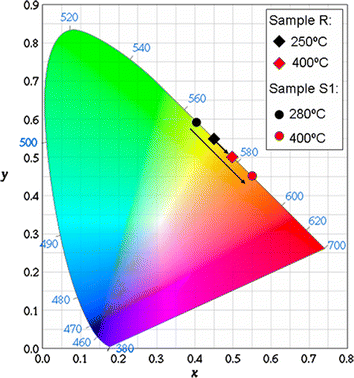Artículos SCI
2010
2010
Nanotecnología en Superficies y Plasma
Surface nanostructuring of TiO2 thin films by high energy ion irradiation
Romero-Gomez, P; Palmero, A; Ben, T; Lozano, JG; Molina, SI; Gonzalez-Elipe, ARPhysical Review B, 82 (2010) - 115420 (8 pages)
Show abstract ▽
The effects of a high ion dose irradiation on TiO2 thin films under different conditions of temperature and ion nature are discussed. We have shown that anatase TiO2 thin films irradiated with N+ ions at room temperature develop a typical microstructure with mounds and voids open to the surface whereas irradiations at 700 K generate a surface pattern of well-ordered nanorods aligned with the ion beam. The formation of these patterns is caused by the simultaneous effect of ion irradiation near the film surface and a film temperature favoring the structural mobilization of the defective network of the material. To explain these phenomena, a qualitative model has been proposed and further tested by irradiating the TiO2 thin films with F+ and S+ ions under different conditions. The obtained results demonstrate that ion irradiation techniques enable the formation of tilted nanorod surface patterns with lengths of about 100 nm on anatase TiO2 thin films.
Septiembre, 2010 | DOI: 10.1103/PhysRevB.82.115420
Materiales Coloidales
Uniform YF3:Yb,Er up-conversion nanophosphors of various morphologies synthesized in polyol media through an ionic liquid
Nuñez, NO; Quintanilla, M; Cantelar, E; Cusso, F; Ocaña, MJournal of Nanoparticle Research, 12 (2010) 2553-2565
Show abstract ▽

We describe a facile procedure for the synthesis at low temperature (120 A degrees C) of water-dispersible uniform YF3:Yb,Er up-conversion nanophosphors of various morphologies (rhombic and spheroidal) by homogeneous precipitation in polyol solutions containing different lanthanide salts and an ionic liquid (1-butyl, 2-methylimidazolium tetrafluoroborate) as fluoride source. It is shown that the shape of the obtained nanoparticles is mainly determined by the nature of both, the polyol and the lanthanide precursors, which also affects to their colloidal stability in water suspensions. These morphological differences are explained on the basis of a different mechanism of particle formation. The efficiency of the up-conversion processes in the synthesized rhombic and spheroidal nanoparticles is also comparatively analyzed and the observed differences are justified on the basis of the different impurities incorporated to the nanophosphors during their synthesis process.
Septiembre, 2010 | DOI: 10.1007/s11051-009-9824-6
Nanotecnología en Superficies y Plasma
On the microstructure of thin films grown by an isotropically directed deposition flux
Alvarez, R; Romero-Gomez, P; Gil-Rostra, J; Cotrino, J; Yubero, F; Palmero, A; Gonzalez-Elipe, ARJournal of Applied Physics, 108 (2010) 64316
Show abstract ▽

The influence of isotropically directed deposition flux on the formation of the thin film microstructure at low temperatures is studied. For this purpose we have deposited TiO2 thin films by two different deposition techniques: reactive magnetron sputtering, in two different experimental configurations, and plasma enhanced chemical vapor deposition. The obtained results indicate that films grown under conditions where deposition particles do not possess a clear directionality, and in the absence of a relevant plasma/film interaction, present similar refractive indices no matter the deposition technique employed. The film morphology is also similar and consists of a granular surface topography and a columnarlike structure in the bulk whose diameter increases almost linearly with the film thickness. The deposition has been simulated by means of a Monte Carlo model, taking into account the main processes during growth. The agreement between simulations and experimental results indicates that the obtained microstructures are a consequence of the incorporation of low-energy, isotropically directed, deposition particles.
Septiembre, 2010 | DOI: 10.1063/1.3483242
Química de Superficies y Catálisis
AISI 304 austenitic stainless steel monoliths: Modification of the oxidation layer and catalytic coatings after deposition and its catalytic implications
Martinez, LMT; Sanz, O; Centeno, MA; Odriozola, JAChemical Engineering Journal, 162 (2010) 1082-1090
Show abstract ▽

Monolithic CeO2 and Au/CeO2 catalysts were prepared using austenitic stainless steel (AISI 304) as metallic substrate. Both monolithic and powdered catalysts were characterized before and after CO oxidation reaction by N-2 adsorption desorption, XRD, SEM, TEM and GD-OES. Catalyst deposition on the stainless steel surface results in modifications of the catalyst, the oxide scale and the oxide scale/alloy interface through the interaction between the coating and the steel oxidation layer. Besides this, oxidation of the alloy is also detected. The extension and nature of these modifications depends on the catalyst nature, and on the reaction conditions. As a result of these modifications CO oxidation on Au/CeO2 catalysts is enhanced and gold surface dynamics is modified.
Septiembre, 2010 | DOI: 10.1016/j.cej.2010.07.005
Reactividad de Sólidos
Sintering by SPS of ultrafine TiCxN1-x powders obtained using mechanically induced self sustaining reaction
Borrell, A; Fernandez, A; Torrecillas, R; Cordoba, JM; Aviles, MA; Gotor, FJBoletin de la Sociedad Española de Cerámica y Vidrio, 49 (2010) 357-360
Show abstract ▽
In this work high purity and nanometer character titanium carbonitride TiCxN1-x powders were obtained by mechanically induced self sustaining reaction (MSR) in a high-energy planetary ball mill, from a mixture of titanium with graphite or carbon nanofiber (CNFs) in a nitrogen atmosphere. A promising method for developing these materials is the coupling of the MSR with SPS sintering technique. The product is sintered at 1400 degrees C and 1700 degrees C, obtaining a completely dense monolithic ceramic (>99% t.d). In this work, the influence of SI'S treatment and carbon precursor on material microstructures was studied and the main mechanical properties of the end material were evaluated.
Septiembre, 2010 | DOI: 10.3989/cyv.2010.v49.i5
- ‹ anterior
- 371 of 422
- siguiente ›














